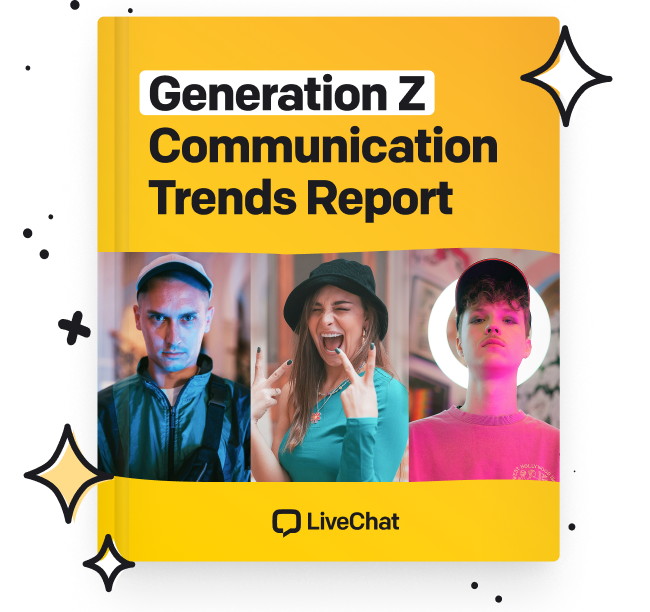Showing top 0 results 0 results found
Showing top 0 results 0 results found

We’ve asked managers from various industries about their biggest mistakes and challenges as leaders and what lessons they’ve learned over the years.
What connects all these managers is that most of them had wrong assumptions about what their job would look like or how many different skills they needed to master for that role. The truth is, no one is born a leader, and the process of becoming one requires a lot of work. It starts from getting to know yourself, understanding your strengths and weaknesses, allowing yourself to make mistakes, and learning lessons from them.
There’s no doubt that great leadership starts from within. Once you gain that self-awareness, you can focus on discovering the best ways to guide others.
12 managers who shared their stories about learning from mistakes proved that they’re on the right path to being great leaders. They’re aware of themselves and their mistakes, they acknowledge the lessons they’ve learned, and they appreciate the progress they’ve made so far. Let’s learn from them, shall we?
Here’s a list of all the mistakes mentioned in the article so you can easily find what you need:
1. Blaming others for mistakes
2. Allowing your perfectionism to influence the team
4. Making important decisions based on emotions
5. Jumping to conclusions without double-checking with an employee
6. Expecting everyone to do the job the same way you do
7. Delegating tasks the wrong way
8. Correcting employee’s mistakes
9. Talking and directing over listening and guiding
10. Pushing too hard
11. Relying too much on a resume
12. Forgetting about work-life balance
#1 Blaming others for mistakes

Karl Armstrong, Founder of EpicWin App
“When I was a young leader, I used to have this ‘it’s your fault’ mentality. I hate my employees making mistakes because I feel like I didn’t train them good enough. For me, a mistake is equal to incompetent leadership.
We had this huge incoming project, and we were really looking forward and preparing for it. One of my employees took the initiative to suggest plans and ideas for the project. I acknowledged it and accepted her proposal. I trusted her, she’s one of my tenured seniors, and I was confident that she knows what she’s doing. When the project took off, her plans brought us down the drain. Initially, I was mad for taking a big risk. Likewise, I was mad at her for not knowing that her plans would not work. It brought us into a heated confrontation which almost led her to quit. We let everything settle down and it took us a few days before we really talked about it one-on-one.”
Lesson learned:
“That particular situation made me realize how weak I was as a leader. I agreed towards a decision, but I refused to be accountable for mistakes. I blamed it on the person who gave the initiative and effort to help. I condemned her for being wrong instead of having her back. My take away as a leader is that we should rise above our immaturity and stop pointing fingers. Never individualize a mistake because their mistake is also yours.
Hence, strong leaders are made to build their people up amidst failures and mistakes. From then on, our team established this culture of one mistake by a person is everyone’s mistake. We are regularly checking on each other, discussing our opinions and differences in order to meet halfway. That situation opened an opportunity for us to be better, especially for me. It changed my perspective from making a stupid mistake to an opportunity for improvement.”
#2 Allowing your perfectionism to influence the team

Michael Alexis, CEO at TeamBuilding
“Like many business owners, I have a very DIY focus on work. If there is a problem, I want to figure it out, and I want to do it as close to perfect as I can. As I started in management and leadership, I took the advice that you need to delegate work. This was difficult for me, and I also lacked developed skills in giving direction and feedback on exactly what I wanted.
As a result, my messaging was kind but not particularly helpful.”
What to do:
“Over time, I found a great way to provide feedback instead. In addition to in-person or video feedback, we also have a #nitpicking channel on Slack where we can celebrate small errors. This reframe allows us to pursue the perfection I want in small processes without harming morale.”
#3 Micromanagement

Sherry Mae, CMO at Tankarium
“When people first become leaders, their initial perception of proper management is to become as hands-on as possible. However, when leaders perform their responsibilities to the point of micromanagement, it affects output quality and deteriorates the relationship with their members.”
What to do instead:
“I recommend trusting their team members with their assigned tasks. If they fail to deliver, that’s the time to intervene. Otherwise, if they’re doing a good job, but you’re still observing their movements like hawks, it creates a wrong impression that you do not trust your team.”
#4 Making important decisions based on emotions

Ruggero Loda, Founder of Running Shoes Guru
“An employee fell asleep while working on our website’s newest iteration. As a result, we couldn’t launch on time which jeopardized the efficacy of our email, PPC, and organic traffic campaigns. I was livid when I found out, and I laid off the employee immediately. What I didn’t realize is that without the employee, we definitely wouldn’t go live on time! Now, instead of having to deal with a slight delay, I either had to pay someone a fortune to take us live fast, go back and try to compromise with the employee, or wait for weeks.”
What to do:
“As soon as the episode was over, I went and spoke to the employee. I apologized, she apologized, and we ended up working another year after that. In the end, she continued to work for me as a consultant, I still call her up sometimes, while starting her own project.”
Lesson to remember:
"I’m competitive, and I’m a perfectionist. I feel a great deal of responsibility for my business and employees. I took the delay in getting our site out very personally. But, in the end, we were 100% fine. The team made it work, sent out updates to our visitors, who were very patient with us, and everything worked out 100% fine. I’d worried for nothing, and we still hit our financial goals after the launch."
#5 Jumping to conclusions without double-checking with an employee

Jagoda Wieczorek, HR Manager at ResumeLab
“When I got my first senior-level position as VP of People & Culture, I jumped up and down for joy. A couple of weeks later, I was desperate. Why? We hired a promising entry-level HR specialist that didn’t have much tangible experience in HR but who was pretty ambitious. Because we were still a startup, the person was expected to be a one-man band who could juggle multiple projects, oversee several HR initiatives, and manage recruitment processes for two countries pretty much single-handedly.
The result was that the new hire was having massive trouble pulling their weight. After three months, many of my colleagues were seriously considering the new person wasn’t just cut-out for the job and that we should go straight ahead and let them go.
What to do:
“I approached the person and offered them a helping hand. I personally talked to the CEO of the company in an effort to pair them up with a mentor for six weeks to get the recruit up to speed. What came next was a steep learning curve, and three months later, the new HR specialist was killing it in their job.”
Lesson learned:
“Today, when I look back, I realize that in 95% percent of cases, with the right on-the-job training and supervision, it’s possible to make a seemingly bad hire do a 180 as long as they align with your culture and core company values.”
#6 Expecting everyone to do the job the same way you do

Brendan Heffernan, Editor at Dunk or Three
“My first, and probably biggest, mistake is that I assumed my leadership style worked for everyone on my team and that they would have to adjust to my style because I was in charge. This obviously couldn't have been further from the truth as I know now. We were organizing a jobs boot camp once with around ten job seekers and 20 potential employers where the goal was to coordinate a networking event to surround these recent college graduates with ideal companies to network with. While organizing this event, I had to manage my team through multiple stages of the process and realized quickly that everyone didn't flow the same.
My approach is very no-nonsense and, if I see someone joking around, I immediately think they aren't taking the task seriously. One person on the team is not that way and jokes a lot. So much so that I had to address her early in the project and was met with resistance. She didn't think the project had to be as serious as I was making it out to be, and eventually, I realized that she was right, and I was wrong.
She worked with our businesses through the process, and I realized that if she had her head down and acted as no-nonsense as me, she wouldn't have as good a relationship with her contacts, thus making it harder for us to find good companies to participate.”
What to do:
"Once I backed off and watched her operate, I realized that, while setting up an event like we were, the light feeling across all team members helped make it more attractive, purposeful, and well organized. It was also fun and enjoyable, too. The team member that I thought was hurting the process with their mood was actually helping the entire event's feel and made everyone feel better."
Lesson learned:
"The self-reflection I had to do was uncomfortable but made me a better leader in the long run. I still like a fairly tight ship when I am in charge, but I don't get as bent out of shape if someone doesn't operate exactly like I would in a situation. I will now evaluate their performance and how others react to them before jumping to the conclusion that their style is wrong."
#7 Delegating tasks the wrong way

Yaniv Masjedi, CMO at Nextiva
“Part of responsible leadership is the proper delegation of tasks to the best team members that can handle the responsibility. However, the biggest obstacle that leaders make is letting their preconceived bias take over their judgment, affecting the delegation of tasks to the right people. The proper task delegation is a difficult feat to accomplish, especially for the neophyte leader.”
What to do:
“Leaders should study their team members’ performance, particularly their strengths and weaknesses, for the next task delegation. After completing multiple task delegations, leaders know by heart what their members excel at doing and where they fall short. With these discoveries, leaders can delegate tasks effectively.”
Lesson learned:
“There’s no way to improve besides experience, so leaders shouldn’t be hard on themselves whenever they make this mistake. If you want a particular employee to improve their skills, I recommend partnering them for a task with an experienced employee to act like a teacher-student. With this setup, the leader will have the peace of mind that the task execution is up to the required standard while an employee improves their skills subsequently.”
#8 Correcting employee’s mistakes

John Prejean, CEO at Guardian Computer
“Early on in my role as a leader, it was easy to simply ‘correct’ an employee’s mistake. I was happy to offer my expertise, assistance, and support to employees. Not to mention, it often took less time for me to simply fix their mistake than it would take for me to explain what went wrong, why, and how to fix it. But this does little for the employee except tell them that someone needed to step in to correct their mistake.”
Lesson learned:
"One major way that I’ve grown as a leader is to also be a teacher. To the best of my ability, I treat feedback as a teaching moment. First, I identify what went wrong and explain why. Next, I discuss how it should have been done and why so that they leave the conversation with new knowledge. I also try to rid the situation of any sense of ‘hierarchy.’ By this, I mean that I never want them to feel like the boss getting involved means they’ve screwed up. I never want to point the finger. I want to be a resource to help them grow as professionals."
#9 Talking and directing over listening and guiding

Shelisa Bainbridge, Leadership Coach
“I worked with a director who enjoyed seeing the nodding heads as he talked and smiled as everyone scurried away to follow his orders. To him, his title meant that others needed to listen to him and take his direction. In order to evolve the way that they worked, we needed him to demonstrate greater awareness and trust in his team, and this meant shifting his mindset from ‘ruling’ his people to ‘serving’ them.”
What to do:
“There are many tactics that we use to lean leaders into a new way of thinking, and one of them is having them listen more than they speak. Sounds simple, but it can take a lot of time to change that habit. We asked him to spend about 80% of his time listening in order to understand and about 20% of his time speaking and front-loading his 20% with questions instead of directions. It took practice and consistent coaching, but eventually, people saw him as insightful and supportive.”
Lesson learned #1:
“Leaders should consider disproportionately applying their time toward developing their teams over directing them. For example, I experienced firsthand the benefits of having a leader who spent less time in meeting updates and more time sharing his own career wins, failures, and lessons learned. Not only was I learning from his experiences, but for me, it created a deeper connection, steeper growth, and long-lasting loyalty.”
Lesson learned #2:
“Consider strengths-based performance appraisal conversations. Shifting the focus from a list of employee shortfalls to a discussion about ways that the employee’s natural advantages can be applied to add value to a business is a quick and big win for businesses. It creates an environment where people feel seen, recognized, and appreciated, and this results in higher job satisfaction and productivity.”
#10 Pushing too hard

Reuben Yonatan, Founder and CEO of GetVoIP
"As a founder and CEO, I have made several mistakes that have taught me valuable lessons. One, in particular, sticks out. When I was starting out, to ensure my company succeeded and that we became profitable as quickly as possible, I pushed my employees and myself hard. Unfortunately, the harsh pace (12-14 hour work days) led to burnout. Some of my employees suffered as well, and I lost a few top talents.
I learned a harsh lesson, and since then, I have become the biggest proponent of work-life balance. I changed how I ran the business and introduced a more flexible schedule where employees could work from home as needed."
Lesson learned:
"I did not know it then, but by insisting on work-life balance for my employees, they became more productive. Also, for several years now, I have managed to retain my top talent, which has made us quite competitive. In 2016, Inc. Magazine ranked us #591 among the top 5000 fastest-growing companies in the United States."
#11 Relying too much on a resume

Eric Sachs, CEO at Sachs Marketing Group
“I’m the CEO of a digital marketing agency, and I like to employ a variety of personalities and talents who, of course, have the ability to succeed in the role and further our goals. But, sometimes, you just can’t get that from a resume. I've wasted their time and my time by bringing in people just because they had amazing resumes and ignoring those who didn't.
I know I've lost out on great fits for my team because I saw the success I began to have in finding the right person when I stopped focusing solely on resumes.”
What to do:
“A great way to encourage some relevant interaction in resumes and applications is to ask questions in the job description. If they don’t answer, then they probably weren’t paying attention, and that’s a good way to eliminate some applicants, but it’s also a good way to learn more about them than on a paper. Ask them to tell you what their show is and why. Ask them to write a haiku about jello. Ask them to give a list of their top five favorite ads upon submission.
Questions like these give a little more relevant personality and filtering options. This way, you’re not just looking at a name and employment history for 100 applicants but actually learning a little bit about who they are before you decide if you want to know more.”
Lesson learned:
“I now believe in actively searching for the right person by putting out tailored job descriptions and conducting dynamic interviews. Of course, a resume is usually how an applicant gets their foot in the door, but never discount someone who doesn’t have the most amazing cover letter or job descriptions. Sometimes, people just aren’t good at resumes. Sometimes, people just aren’t great at selling themselves on paper, and you can miss out on the perfect fit for your team if you let them drop off the list at that point.”
#12 Forgetting about work-life balance

Mark Hayes, Head of Marketing at Kintell
“It took me the better part of 20 years to fully understand the concept of work-life balance. Before I did, I was running myself ragged.”
What to do:
“I divide time in my calendar into ‘small blocks that give me a chance to better myself’. For example, my mornings might include going to cross-training classes, playing with my son when he gets home, or small personal development courses. Anything to keep me active and putting in the work. After these 30-60 minute blocks of 'play’, I return to work for a two-hour burst, and then repeat the cycle. I've found this to be very effective. When it's time to work again, I feel invigorated and newly motivated to manage and make decisions with a clear mind.”
Lesson learned:
“Exceed expectations with your work and management by first making sure your work-life balance is in order, or as I call it, ‘work but play.’”
Leadership at its best
As Robin Sharma, one of world's top leadership experts, said: "There are no mistakes in life, only lessons." It's all about perspective. If you want to grow as a leader, you need to allow yourself to make some mistakes along the way, and treat them as lessons. No one is born a great leader. That’s just an assumption we have for people who worked hard on themselves, developed strong communication skills and empathy, and have a goal-focused mindset. You become a leader by learning, listening, and doing things that make you uncomfortable. You constantly learn to grow and help others do the same.
As Robin Sharma, one of world's top leadership experts, said: "There are no mistakes in life, only lessons."
Are you a leader? Do you want to become one? Hit me up on @Twitter and let’s talk!
Get a glimpse into the future of business communication with digital natives.
Get the FREE report








Comments